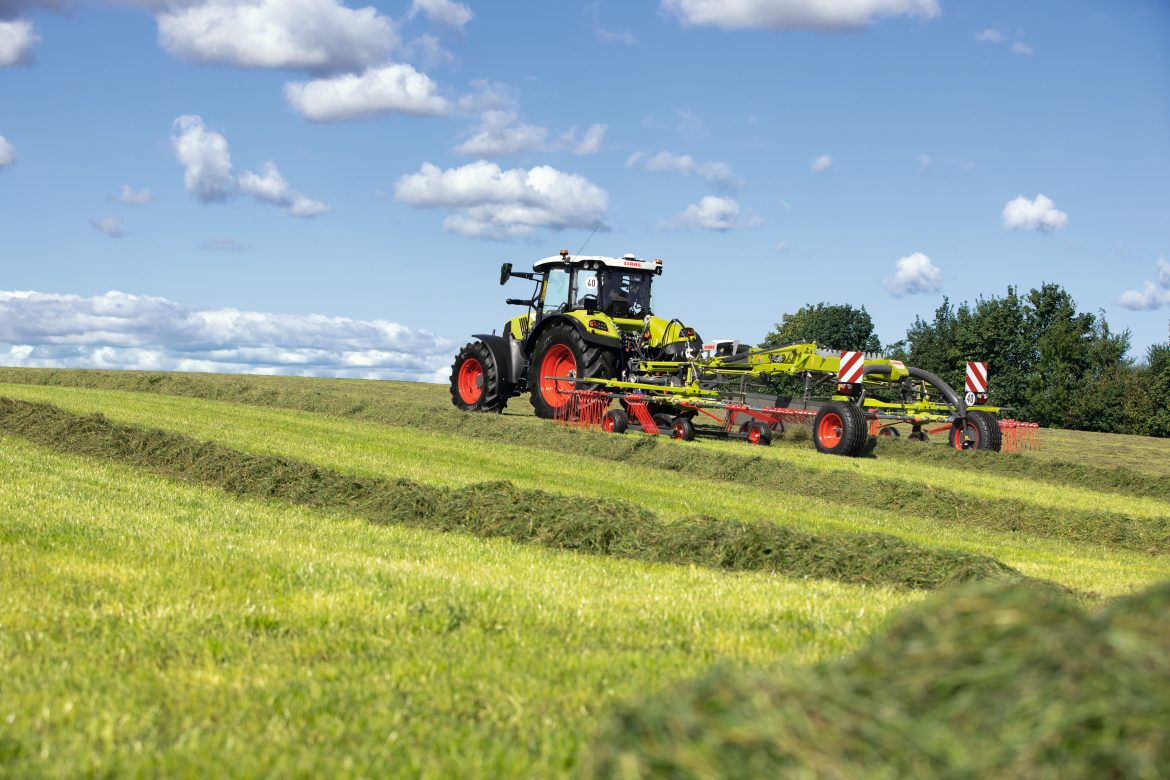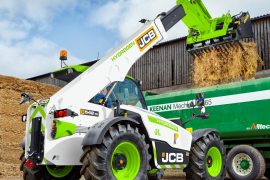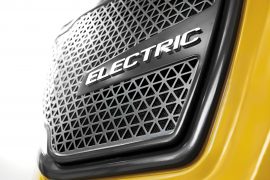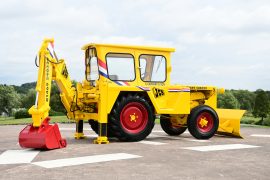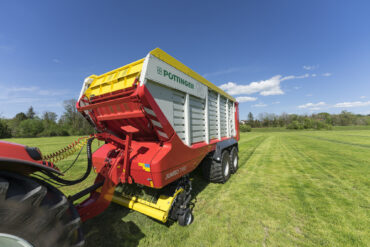CLAAS has updated its range of twin-rotor LINER rakes with the introduction of seven new models with simplified controls and the customary first-class performance. Two BUSINESS models with ACTIVE FLOAT rotor suspension complete the new range.
CLAAS has long been a leading supplier of rotary rakes and these new models offer numerous innovative features and functions designed to make life easier for users and guarantee premium forage quality.
Intelligent suspension for perfect ground-contour following
Like their predecessors, the latest generation LINER twin-rotor rakes offer excellent ground-contour following for clean raking with low forage contamination. The GRASS CARE rotor guidance system ensures that the rotors are actively suspended during operation. When the rotor arms are lowered, the rear rotor wheels touch down first, producing a ‘jet-effect’ that prevents the tines from digging in and damaging the grass sward. The BUSINESS models are equipped with individual rotor lift operated by preselection on the terminal as standard; this function is optionally available for spool valve operation on the TREND versions.
The LINER 2600 and 2700 are fitted with a four-wheel chassis as standard, while the LINER 2800, 2900 and 3100 come with a six-wheel chassis. The wheels are positioned close to the circle of rotation of the tines to ensure smooth rotor guidance and optimum ground-contour following. The front two chassis wheels are steerable. With the 6 wheel system, the rear rotor wheels are replaced with pendulum axles.
The chassis design pulls the rotors across the field which combined with the floating cardan suspension with generous three-dimensional rotational movement, ensures outstanding ground-contour following even on uneven ground. This provides optimum raking performance with minimal forage contamination.
The rake height can be easily read off the scale on the rotor’s central shaft and quickly adjusted by means of a crank handle on the rotors. Hydraulic rotor height adjustment is also optionally available for the dual-rotor swathers with central swathing. With the LINER 2900 and 2800 BUSINESS, the height of each rotor can be controlled separately using the preselection function on the ergonomic CEMIS 10 control unit and then actuating the tractor spool valve. As an option, the TREND version of the LINER dual-rotor swather can be supplied with hydraulic rotor height adjustment with direct spool valve control.
Simple settings and efficient drive
The tine arms of the LINER 3100 to 2700 models are firmly attached by the 20-spline shaft with no play and secured with a PROFIX bracket. In the event of a collision with an object, the tine arms deflect at a predefined bending point to avoid damaging the auxiliary gearbox. Inserting and removing the tine arms is quick and very straightforward.
The dual tines with windings are fitted on the tine arm and secured with a bolt to reduce the risk of breakage. Should a breakage occur, the retainer reliably prevents the tine from flying off. Each tine arm is fitted with five 9.5 mm thick dual tines. The double-angle silage tine is kinked at an angle of 10 degree to create a 10 mm long trailing end to help lift the crop of the stubble. This design ensures gentle and effective raking performance and optimal swath formation.
The rotors are fitted with individual friction clutches to protect against overload – they respond more smoothly than cam clutches and allow work to continue non-stop even during load peaks. The freewheel of the drive shaft is positioned directly inside the Y-gearbox, enabling the rotors to rotate freely in transport position.
On the LINER 3100, 2900 and 2800 the working width and swath width are adjusted hydraulically and synchronously using the telescopic arms. On the LINER 2700 it uses a single acting hydraulic ram, and on the 2600 they are adjusted mechanically. The LINER 2700 uses a pin and hole system with four different positions; in the LINER 2600 three different working widths can be set using adjustment bolts.

